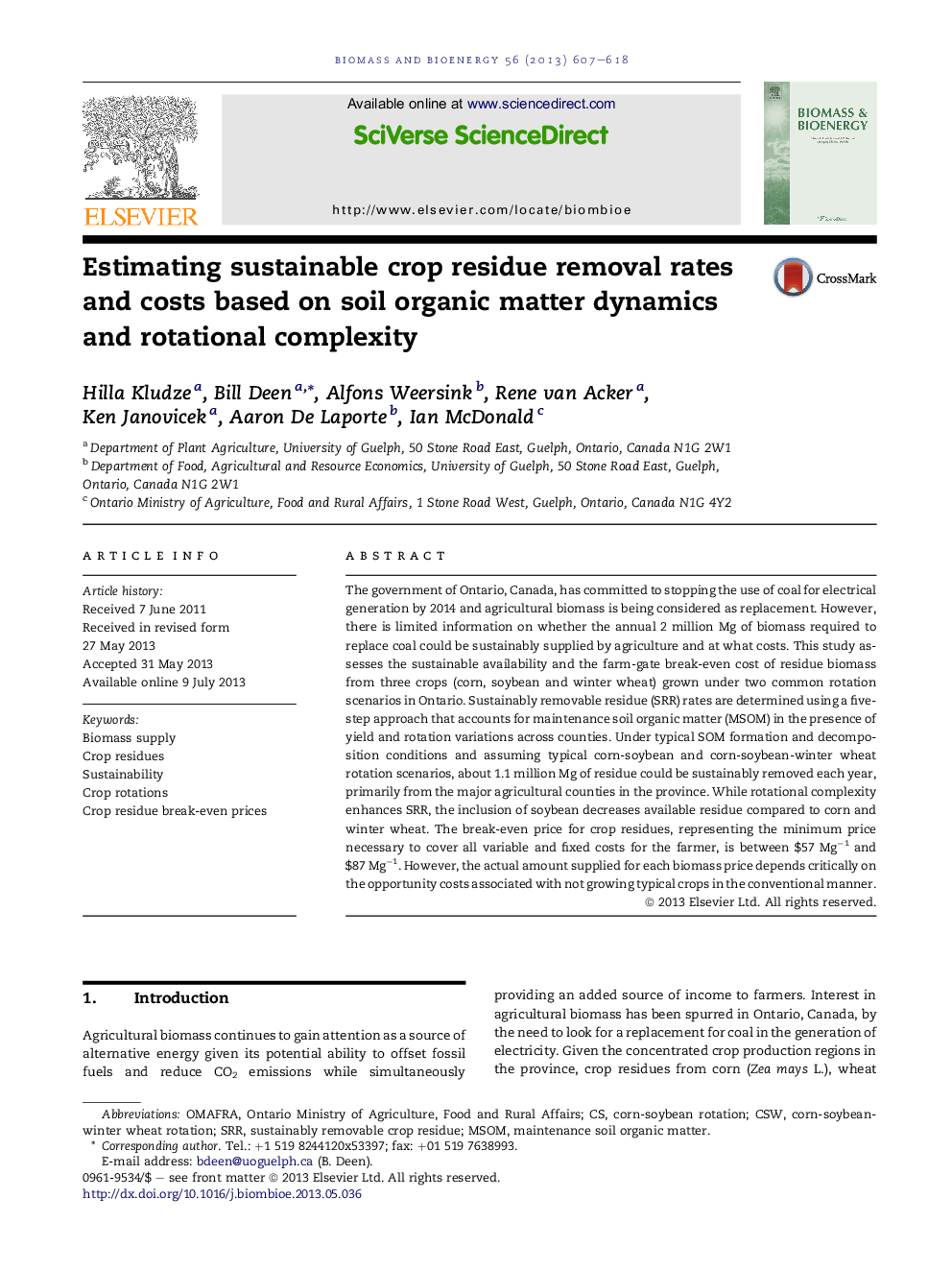| Article ID | Journal | Published Year | Pages | File Type |
|---|---|---|---|---|
| 7065301 | Biomass and Bioenergy | 2013 | 12 Pages |
Abstract
The government of Ontario, Canada, has committed to stopping the use of coal for electrical generation by 2014 and agricultural biomass is being considered as replacement. However, there is limited information on whether the annual 2 million Mg of biomass required to replace coal could be sustainably supplied by agriculture and at what costs. This study assesses the sustainable availability and the farm-gate break-even cost of residue biomass from three crops (corn, soybean and winter wheat) grown under two common rotation scenarios in Ontario. Sustainably removable residue (SRR) rates are determined using a five-step approach that accounts for maintenance soil organic matter (MSOM) in the presence of yield and rotation variations across counties. Under typical SOM formation and decomposition conditions and assuming typical corn-soybean and corn-soybean-winter wheat rotation scenarios, about 1.1 million Mg of residue could be sustainably removed each year, primarily from the major agricultural counties in the province. While rotational complexity enhances SRR, the inclusion of soybean decreases available residue compared to corn and winter wheat. The break-even price for crop residues, representing the minimum price necessary to cover all variable and fixed costs for the farmer, is between $57 Mgâ1 and $87 Mgâ1. However, the actual amount supplied for each biomass price depends critically on the opportunity costs associated with not growing typical crops in the conventional manner.
Related Topics
Physical Sciences and Engineering
Chemical Engineering
Process Chemistry and Technology
Authors
Hilla Kludze, Bill Deen, Alfons Weersink, Rene van Acker, Ken Janovicek, Aaron De Laporte, Ian McDonald,
